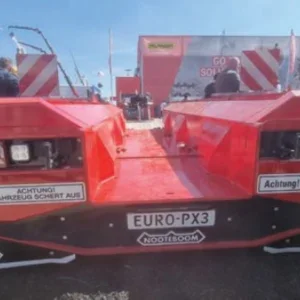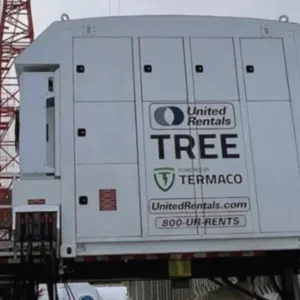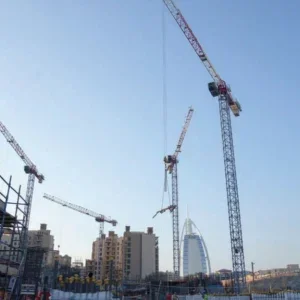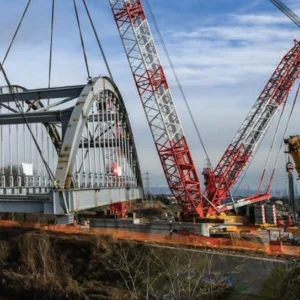When a crane is involved in an accident, it is usually the boom that bears most of the damaged. The question then is: can you repair it, or do you have to get a new one? Crane manufacturers and safety officials are, in general, strongly opposed to crane owners repairing their own booms. It can be done, they say, but only in strict accordance with the recommendations of the crane manufacturer. And the first recommendation of most manufacturers is: don’t do it.
In 1998 the US manufacturers issued guidance through their Power Crane & Shovel Association, which is part of the Construction Industry Manufacturers Association. From this it was quite clear that while they are naturally concerned about safety, product liability is also a key worry for them. Mess with our crane, they warn, and your warranty is void (Boom guidance July98, p38).
The attitude of the manufacturers contrasts with that of the crane owners and crane repair companies who recognise that boom repair is often cheaper than replacing it for a new one. The question remains of course: will the repaired boom be as strong as it was originally? With the use of high-grade steels boom repair is much more complicated nowadays. However, specialist repair company Kraantechniek de Gier, from Hoorn in the Netherlands, says that its work “proves that it is not impossible”. With 25 years experience and an ISO 9002 certificate to its name, it maintains very specific procedures:
• A piece of the original boom material is sent to a laboratory where it is investigated to determine the mechanical strength and quality. (This information is rarely given by the crane manufacturers).
• With this information, the right material for boom repair is ordered.
• After an internal quality control of the new material, a suitable welding procedure is chosen. (Kraantechniek de Gier has a library of tested welding procedures for steel qualities up to TSTE 960 V material).
• The welders are ‘6GR’ certified because welding has often to be done in difficult positions.
• After welding, the welds are non-destructive tested (MPI, US or X-ray).
• The fatigue strength of the weld is increased by a finishing operation and – if possible – overloading of the crane.
Kraantechniek de Gier claims that this procedure ensures good quality welds. But some crane manufacturers remain unconvinced of the permissibility of welds in booms. According to them, the fatigue strength of a repaired boom is far lower due to structural changes in the welded area. Kraantechniek de Gier disagrees and decided to prove its case. It commissioned Formtec Engineering to investigate the behaviour of repair-weld in crane constructions made of high strength steels. The investigation was mainly focused on the influence of the temperature of the weld area, before and after heating, and the fatigue behaviour of welds in high strength steel.
Says Ruud Schreijer, managing director of Kraantechniek de Gier: “We would like to be certain that the repaired booms are absolutely safe. With the increased use of high alloyed steels, we not only have to invest in improving our process of repairing but we also have to extend our knowledge of materials and their behaviour. It is of great importance to match our practical experience, which has been gained over the years, with theoretical knowledge and properly performed research.” The research project was completed in July 1999. Several welds with different cooling rates (one without heating, and three within the range of 80° to 200° C) were tested on their static and dynamic behaviour. When a weld has cooled too fast a hard and brittle martensite structure will occur. This is why knowledge and understanding of the different process parameters, which influence the cooling rate of the weld, is important to guarantee the weld quality, says Schreijer.
For instance, he says, the study made clear the tolerances in the pre-heating temperature, which may occur in practice, without reducing the static and dynamic strength of the weld.
Welding crane constructions in the open air should always be avoided, unless the temperature and draught influences can be kept under control.
Finishing operations are essential to the fatigue characteristics of welds. According to Schreijer, the tests proved that grinded welds have equal or even better fatigue strengths than the original material (depending on the way the grinding is performed).The maximum acting stresses should not exceed the values of the applicable standards. With the help of finite element analysis, Formtec Engineering specified the maximum stresses and their location in the boom. From the results of the tests, Schreijer says, the repair procedure of Kraantechniek de Gier was proven not to exceed the standards.
“The results of this study by Formtec Engineering has proved to us that the way we repair crane booms is safe, as long as we stick to our procedure. It has given us tools to improve our repair procedures even further.”






